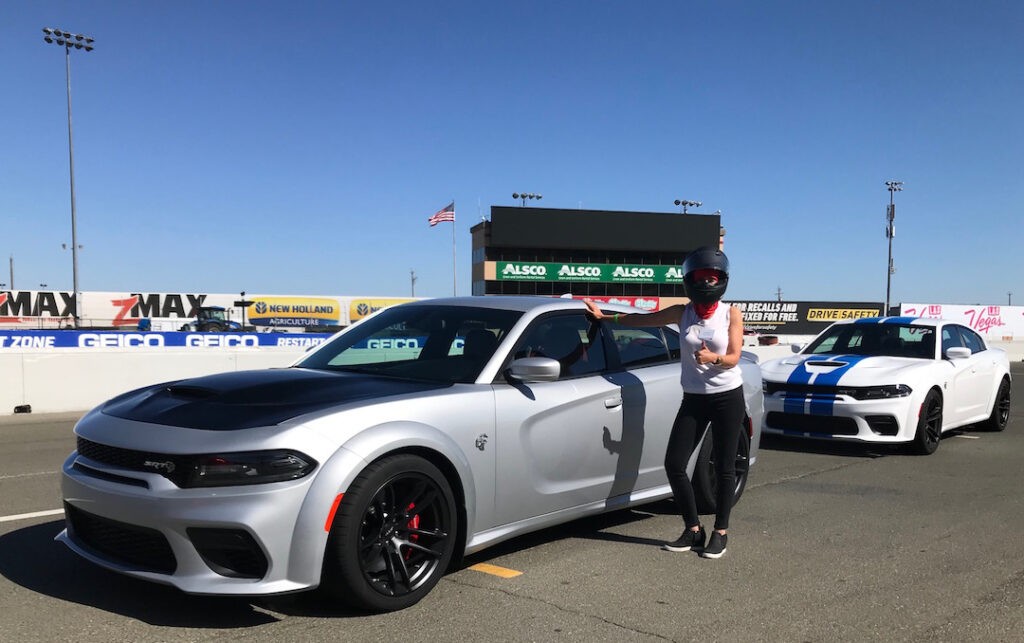I’ve always held a soft spot for the Dodge Charger lineup. From the roaring Scat Pack to the ferocious Hellcat, each variant embodies a blend of classic American muscle with modern aggression. The design strikes a perfect chord, reminiscent of old-school cool yet undeniably contemporary, while the interiors offer a comfortable, albeit undeniably performance-oriented, space. And the drive? Well, it’s traditionally been what you expect from American muscle – raw power, but perhaps lacking in finesse. However, Dodge has thrown down the gauntlet, because the Widebody Charger is here, and it doesn’t just drive; it absolutely devours the road.
My skepticism was quickly dismantled during an unforgettable few days in Sonoma, California. Imagine, if you will, piloting this beast both on the legendary Sonoma Raceway and along the breathtakingly scenic coastal roads. It was a tough assignment, but someone had to do it.
Design Philosophy: Badass and Unapologetically Bold
During the vehicle’s presentation, the Dodge designer articulated their vision with striking clarity: “Our goal was to make a vehicle that was badass. We wanted it to be modern, cool, and maybe even a little offensive.” This resonated deeply, encapsulating the spirit of the Hellcat Charger Widebody perfectly. It’s a car that isn’t afraid to make a statement, both in its appearance and its performance.
However, past experiences with Hellcat models left me harboring some doubts. Could this iteration truly deliver a driving experience that matched its aggressive aesthetics? I was about to find out.
Engineering Excellence: The Secret Sauce to Widebody Performance
Then came the engineer, stepping onto the stage to unveil the technical enhancements that underpin the Widebody’s transformative performance. He highlighted key upgrades, starting with the significantly wider Pirelli 305/35ZR20 tires. This immediately signaled a serious intent to improve grip and handling. He then delved into the competition-tuned suspension, featuring Bilstein adaptive damping and EPS—electric power steering.
For those less versed in automotive jargon, let’s break it down. Wider tires equate to a substantial increase in road contact, translating to superior traction and cornering prowess – the difference between navigating life in heels versus sneakers. The upgraded suspension refines the ride and handling balance, offering both track-ready stiffness and road-going comfort. Think of it as the leap from a basic mountain bike to a high-performance, finely tuned machine. And the enhanced electric power steering? Precision and responsiveness are the name of the game, making the car feel more agile and connected to the driver.
With these revelations, a sense of anticipation began to build. Perhaps, just perhaps, this wouldn’t be just another powerful sedan; maybe it would be something truly exceptional.
Driving Dynamics: A Revelation on Wheels
And exceptional it was. The Dodge Charger Hellcat Widebody completely shattered my expectations. It wasn’t just fast in a straight line – that much was almost a given with a Hellcat. It was the way it handled corners, the responsiveness of the chassis, and the overall composure that truly impressed. This wasn’t just brute force; it was refined, controlled power.
The High Points:
- Unbeatable Value Proposition: Boasting a staggering 707 horsepower for a price point under $70,000, the Hellcat Charger Widebody delivers performance that rivals cars costing significantly more. Consider the 2020 BMW M5, which produces 600hp and commands a $102,000 price tag – the Dodge offers more power for considerably less.
- Unexpected Performance Prowess: This isn’t your typical American sedan. The Widebody Charger is remarkably responsive, incredibly powerful, and exhibits minimal body roll, even when pushed hard through corners. It handles with a level of agility and precision rarely associated with cars of this size and heritage.
- Fresh Aesthetics with a Nod to Heritage: New color options bring a modern twist while subtly referencing Dodge’s storied past. The widebody enhancements are not merely cosmetic; they fundamentally alter the car’s stance and presence, creating a more aggressive and purposeful look. This is the first American muscle car that can confidently dominate both the drag strip and a winding canyon road.
- Widebody Advantage: The wider stance isn’t just for show; it dramatically improves handling and stability, allowing for higher cornering speeds and a more planted feel.
Areas for Improvement:
- Evolutionary Exterior Design: While the design remains true to the Charger’s iconic silhouette, some might desire a more significant departure or further refinement to truly distinguish the Widebody model. The core design DNA is strong, but a touch more visual differentiation could elevate it further.
- Seat Dimensions for All Body Types: The wide seats, while perhaps thematically appropriate for a “Widebody,” might not offer optimal lateral support for drivers of a slimmer build. While spacious, more adjustable bolstering could enhance comfort and support during spirited driving.
The Head-Scratcher:
- SRT Performance Pages Interface: The infotainment system’s SRT Performance Pages, while packed with data and customization options, can feel somewhat convoluted and overwhelming. A more streamlined and intuitive interface would enhance usability. While some enthusiasts may relish the depth of data available, a simpler “M button” style approach, as seen in some competitors, might be preferable for quick access to key performance settings.
The Verdict:
The Dodge Charger Hellcat Widebody unequivocally claims the title of the best American performance sedan on the market today. In a segment with limited direct competition, it stands as a dominant force. Moreover, anticipate its sibling, the Scat Pack Widebody (at a compelling $45,000 price point), to become a common sight in parking lots nationwide, bringing accessible performance to the masses. Dodge has truly hit it out of the park with this one.
